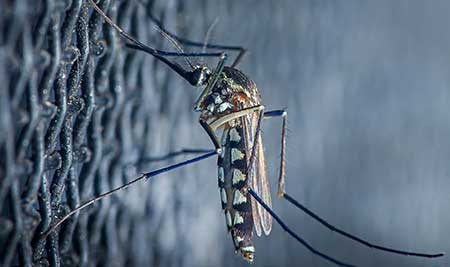No one wants to share their home with uninvited guests — especially pests. From cockroaches darting across the floor to scratching noises in the roof at night, infestations often start small but can quickly get out of hand. Knowing the early warning signs can help you act fast before pests cause damage, spread disease, or make your home uncomfortable.
Here’s what every Australian homeowner should look out for when it comes to pest infestations.
Strange noises in the roof or walls
If you’ve ever heard scurrying, scratching, or thumping noises coming from your ceiling or walls, chances are something’s living up there. In many Australian homes, these sounds are often caused by rats, mice, or possums nesting in the roof cavity.
Possums, in particular, make heavier, slower movements compared to rodents — and are often most active just after sunset. Mice and rats tend to make lighter scratching or gnawing sounds during the night. Any repeated noises inside your walls or roof should be checked immediately to prevent structural damage or contamination.
Droppings and grease marks
Pest droppings are a clear indicator that something’s wrong. Rodent droppings are small, dark, and pellet-shaped, while cockroach droppings look more like tiny black dots or coffee grounds. These are commonly found behind appliances, in cupboards, or under sinks.
Rats and mice also leave greasy smudge marks along walls, skirting boards, or pipes where they travel the same path daily. If you notice these marks or droppings appearing regularly, it’s a sure sign that pests are active in your home.
Damage to food, furniture or wiring
Chewed food packaging, gnawed cables, and shredded insulation are all red flags for rodent activity. Termites and carpenter ants are another major concern in Australia, especially in warm, humid areas. They can cause serious structural damage by eating through timber frames and flooring.
If you notice hollow-sounding wood, bubbling paint, or piles of fine dust (known as frass), call for a termite inspection straight away. Likewise, small chew marks on cords or wires are dangerous signs of rodents that could even pose a fire risk.
Unpleasant smells
A strong, musty, or oily odour is often a hidden sign of pest activity. Cockroach infestations produce a sour, unpleasant smell, especially in kitchens or bathrooms. Rodents leave a distinctive ammonia-like odour from their urine, particularly in roof voids and cupboards.
If a foul smell lingers and you can’t locate the source, it may be from a dead pest trapped in a wall cavity or under the house. In such cases, professional pest removal is usually needed.
Nests, webs and hiding spots
Spiders, wasps, and rodents all create tell-tale signs of nesting. Look for cobwebs in corners, under eaves, and behind furniture — redbacks and huntsman spiders are particularly common in Australian homes. Rodents tend to use paper, insulation, or fabric to build nests in quiet, dark spaces like garages or attics.
If you spot shredded materials or small piles of nesting debris, it’s a sign pests have made themselves comfortable nearby.
Bites, skin irritation or pet scratching
Waking up with itchy red marks or noticing your pets constantly scratching could indicate fleas, mites, or bedbugs. These pests are often brought in by pets or from second-hand furniture. Check your bedding, carpets, and your pet’s sleeping area for signs of tiny insects or dark specks, which could be droppings or eggs.
Unusual pet behaviour
Cats and dogs often sense pests before humans do. If your pet is fixated on a wall, ceiling, or cupboard — sniffing, scratching, or growling at it — they might be reacting to movement or sound from rodents or possums. Trust their instincts and investigate any unusual behaviour.
When to call a professional
While DIY traps and sprays can help with minor issues, persistent pest signs often mean there’s a larger problem. Licensed pest control technicians can identify the species, find their nesting spots, and provide safe, targeted treatments.
